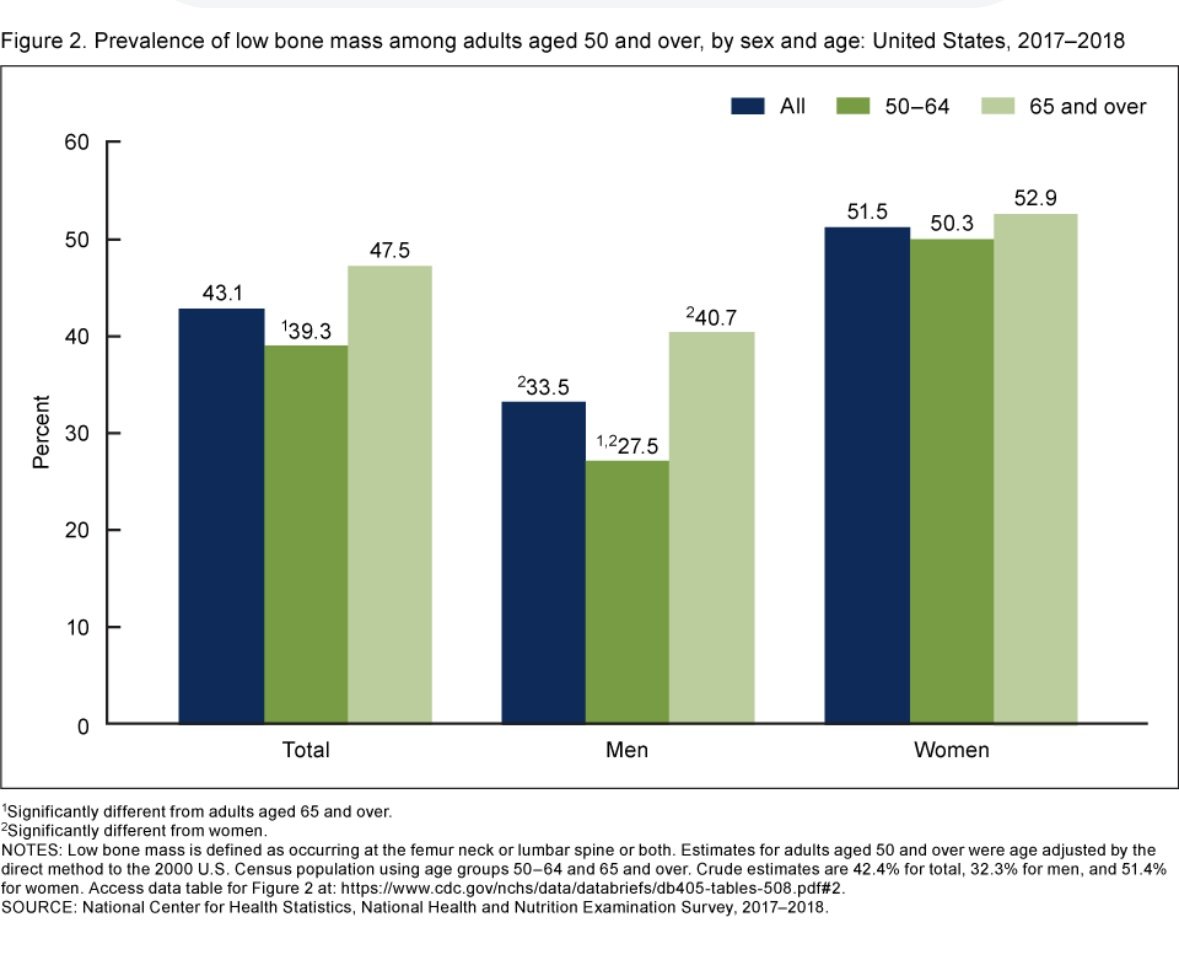Bone Loss
Hello Friends,
Getting older is a time of change for our bodies. Unfortunately, one of those changes can be bone loss. It's a condition many are unfamiliar with, but it's more prevalent than people may guess. Although it’s more common in women, especially after menopause, it does occur in men as well. Here is some great information I hope will help you care for your bones!
There are two categories of bone loss:
Osteopenia: Osteopenia is the condition in which your bones are thinner than age and gender norms.
Osteoporosis: Osteoporosis is the condition in which your bones are thinner and more porous due to the loss of minerals stored in the bones. More severe than osteopenia and at an increased risk of fracture.
Another term that is good to be familiar with when discussing osteopenia and osteoporosis is bone density. Bone density refers to the amount of minerals in your bones and can be an indicator of bone loss.
Throughout life, your bones are in a constant state of renewal. New bone is being made and old bone is broken down. When you're young, your body makes bone faster than it breaks it down and your bone mass increases throughout your childhood. Starting in your 20s, this process slows and most people reach their peak bone mass by age 30. After the age of 30, and especially for women as our hormones change in perimenopause and menopause, bone mass is lost faster than it's created.
Osteopenia Prevalence: See also the chart below from the CDC
Women age 50-64: 50.3%
Women age 65 and above: 52.9%
Osteoporosis Prevalence: See also the chart below from the CDC
Women age 50-64: 13.1%
Women age 65 and above: 27.1%
How likely you are to develop osteopenia and osteoporosis depends partly on your peak bone density in your youth. Peak bone mass is partly inherited and partly dependent on your health, nutrition, and activity level. The higher your peak bone mass in your 20’s and 30’s, the better!
There are some risk factors that also factor in your potential to have bone loss. Some you can change, others you cannot.
Risk Factors:
Your sex. Women are much more likely to develop osteoporosis than are men.
Age. The older you get, the greater your risk of bone loss.
Family history. Having a parent or sibling with osteoporosis puts you at greater risk.
Sex hormones. The fall in estrogen levels in women at menopause is one of the strongest risk factors for developing osteoporosis.
Thyroid problems. Too much thyroid hormone can cause bone loss.
Other glands. Osteoporosis has also been associated with overactive parathyroid and adrenal glands.
Steroids and other medicines. Long-term use of oral or injected corticosteroid medicines, such as prednisone and cortisone, interferes with the bone-rebuilding process.
Medical problems. The risk of osteoporosis is higher in people who have certain medical problems. Some of these include, celiac disease, inflammatory bowel disease, kidney or liver disease, cancer, rheumatoid arthritis.
Osteoporosis is more likely to occur in people who have:
Low calcium intake. A lifelong lack of calcium plays a role in the development of osteoporosis. Low calcium intake contributes to diminished bone density, early bone loss and an increased risk of fractures.
Eating disorders. Severely restricting food intake and being underweight weakens bone in both men and women.
Sedentary lifestyle. People who spend a lot of time sitting have a higher risk of osteoporosis than do those who are more active. Adding weight-bearing activities like walking, running, jumping, dancing and weightlifting can be particularly helpful.
Excessive alcohol consumption. Regular consumption of more than two alcoholic drinks a day increases the risk of osteoporosis.
Tobacco use. The exact role tobacco plays in osteoporosis isn't clear, but it has been shown that tobacco use contributes to weak bones.
Prevention: I recently had a DEXA Scan, a dual-energy X-ray absorptiometry scan, which measures bone density. This test is very quick and super easy. My scan revealed that I have osteopenia. The good news is there are many things we can do from a lifestyle perspective to keep our bones strong! Good nutrition and exercise are two key factors in bone health.
Nutrition: If you are concerned about nutrition or deficiencies I highly recommend you speak with your physician about a consultation with a registered dietitian. It is not recommended to start any supplementation without discussing this with your physician first.
Movement: Movement can help you build bone and/or slow bone loss. Exercise will benefit your bones no matter when you start. One big goal of exercise as it relates to bone health is adding load.
Load: Load is the amount of resistance or impact used during an exercise or movement. Load comes in a couple forms that are both very beneficial for healthy bones.
Resistance training or strength training: Strength training helps strengthen muscles and bones. When you engage in resistance training you put stress on the bone. Your bones react by producing new bone tissue.
Weight-bearing exercises: Walking, jogging, running, stair climbing, skipping rope also add a physical load or stress to your bones. This signals the bones to create more bone.
Balance exercises: Balance is very important for preventing falls that could lead to broken bones. Implementing balance training into your movement program can be easy and fun. Some examples of balance training can be as simple as standing on one foot while you brush your teeth. Putting your pants on while standing up. Lunges and step-ups are also great ways to work on both strength and balance.
Talking to your physician about your bone health is always a great way to begin caring for your bones. Information is power! Stay well•ish friends!
Xoxo,
Dani


